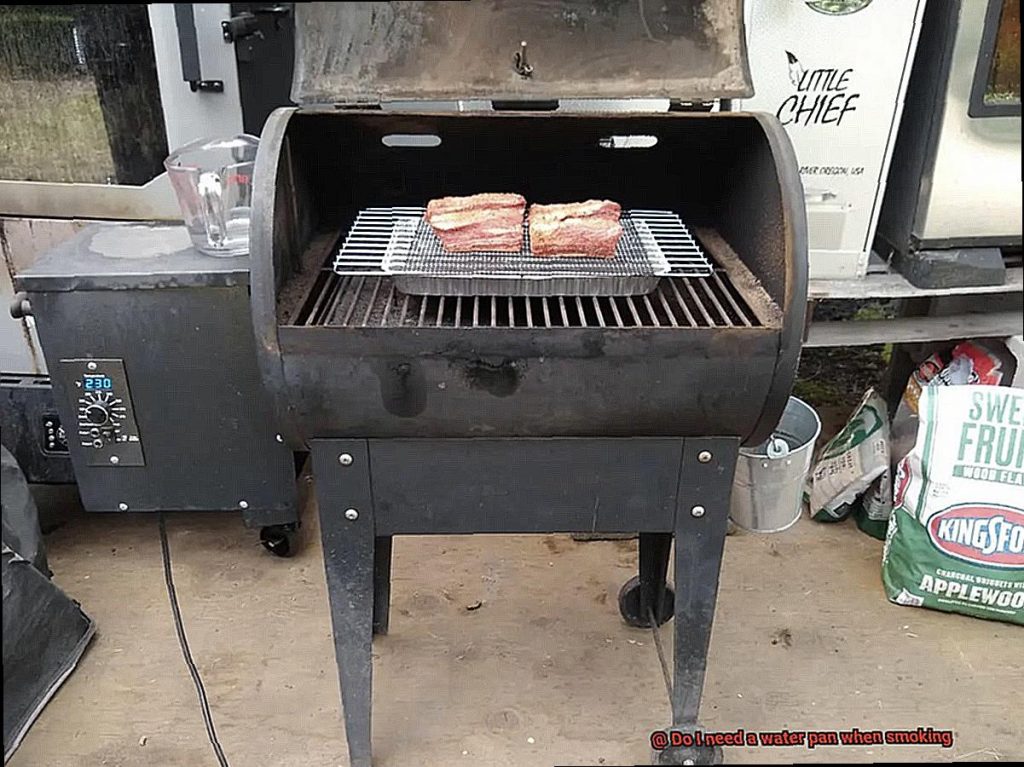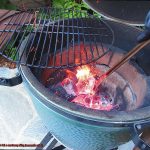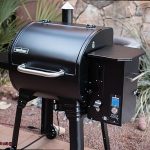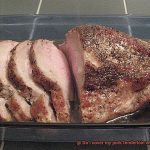- Picture this: it’s a warm summer day, and the sweet, smoky scent of meat is wafting through the air. You can practically taste the tender, juicy goodness before it even hits your plate. But with so many smoking techniques and equipment options out there, it can be tough to know what’s necessary and what’s just a gimmick. One hotly debated topic among smokers is whether or not to use a water pan while smoking. Some swear by it, claiming that it keeps their meat moist and prevents dryness. Others argue that it’s unnecessary or even counterproductive, as it can lower the temperature and create unwanted steam.
- So, let’s get down to business: do you really need a water pan when smoking? Well, there’s no easy answer – ultimately, it depends on your personal preferences and the type of smoker you’re using. In this article, we’ll explore the pros and cons of using a water pan while smoking. We’ll also provide some handy tips for how to use one effectively, covering everything from which types of smokers work best with water pans to how much water you should use (and how often to replenish it). By the time we’re done here, you’ll have all the information you need to decide whether or not to incorporate a water pan into your next smoking session.
So buckle up and get ready for an in-depth look at this smoking technique – we promise it’ll be worth your while.
Contents
What is a Water Pan?
However, achieving that mouth-watering flavor and tenderness takes more than just throwing some meat on the grill. To get it right, you need to understand the importance of a water pan in your smoker.
A water pan is an essential component of many types of smokers, including electric, charcoal, and gas smokers. It’s a shallow metal or ceramic pan filled with water that sits beneath the cooking grate. The primary purpose of the water pan is to regulate the temperature inside the smoker and add moisture to the cooking environment.
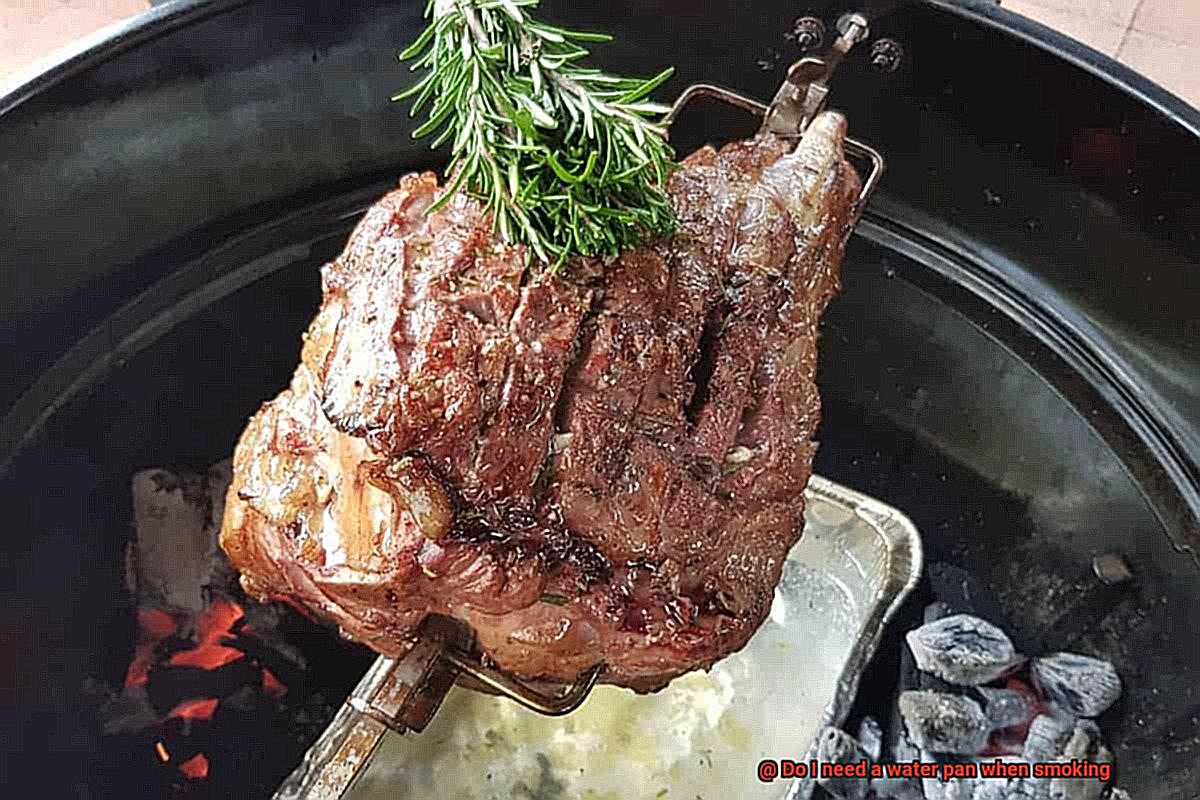
When you heat your smoker, the water in the pan will begin to evaporate, creating steam. This steam helps to keep the temperature inside the smoker consistent and prevents it from fluctuating too much. This is especially important for smoking meats, which require low and slow cooking at a consistent temperature.
In addition to regulating temperature, the water pan also adds moisture to the cooking environment. This moisture helps to keep meats from drying out during the long smoking process. It can also help to create a more tender and flavorful end product.
While not all smokers require a water pan, many experts recommend using one for optimal results. Some smokers even have built-in water pans for added convenience. However, it’s important to note that not all smokers are created equal, and some may not require a water pan for optimal results. It’s crucial to consult the manufacturer’s instructions or seek expert advice before deciding whether to use a water pan with your specific smoker.
Moreover, for those who believe that adding moisture can create steam and result in an uneven bark on the meat’s surface, it’s worth noting that you can easily avoid this by using a dry rub on your meat before smoking. Additionally, using wood chips or chunks in your smoker can also add flavor without adding moisture.
Pros of Using a Water Pan
In this post, I’ll share the pros of using a water pan and how it can help elevate the quality of your meat.

Regulate Temperature
One of the biggest benefits of using a water pan is regulating temperature. By adding water to the pan, you increase the thermal mass of your smoker, which helps maintain a consistent temperature throughout the smoking process. No more worrying about uneven cooking or dried-out meat during long smoking sessions.
Add Moisture
A water pan not only regulates temperature but also adds moisture to the air inside your smoker. As the water evaporates, it creates a humid environment that prevents your meat from drying out. This is especially crucial for leaner meats like chicken or turkey that are prone to drying out during the smoking process.
Infuse Additional Flavor
Using a water pan also allows you to infuse your meat with additional flavor. By adding aromatic herbs or citrus to the water, you can impart subtle flavors into your meat. This technique is especially effective when smoking poultry or fish with milder flavor profiles.
Reduce Smoke Production
Too much smoke can overpower the flavor of your meat and lead to a bitter taste. By adding water to the pan, you create steam that helps dilute the smoke and prevent it from becoming too intense. This results in perfectly balanced smoke flavors that enhance the taste of your meat.
Cons of Using a Water Pan
As a seasoned pitmaster or home cook, you may have heard about the benefits of using a water pan when smoking meat. However, before you incorporate this technique into your smoking routine, it’s important to consider the cons.
One major drawback of using a water pan is that it can dilute the flavor of the smoke, making it less intense and satisfying for those who prefer a stronger smoky profile. The water’s moisture can prevent the smoke from fully penetrating the meat, resulting in a less flavorful finished product.
Another potential issue with using a water pan is that it can make temperature control more challenging. Water takes longer to heat up and cool down than air, which means that it can take longer for your smoker to reach your desired temperature and for any adjustments to take effect. Additionally, colder weather conditions may cause the water in your pan to freeze, further disrupting your smoker’s temperature.
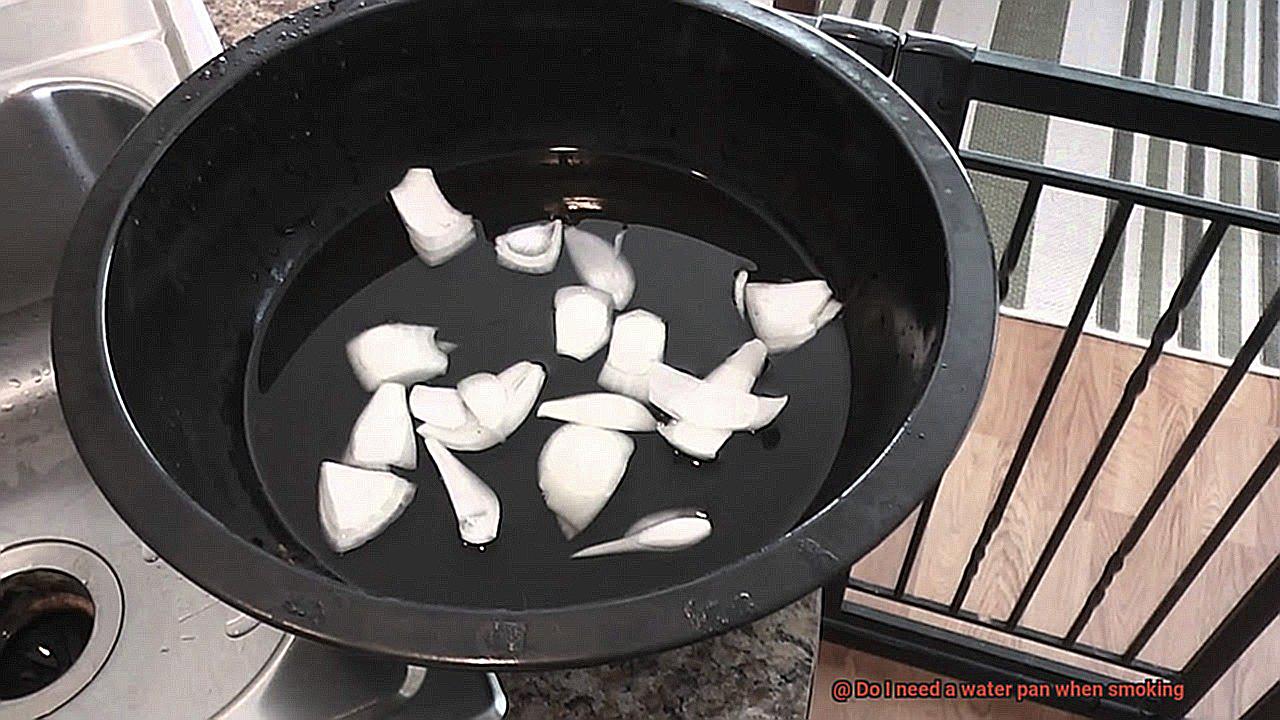
Finally, cleaning up after using a water pan can be more difficult. The water in the pan can become contaminated with fat, drippings, and other debris from your meat, making it harder to dispose of properly. Neglecting to clean your water pan thoroughly after each use can also create an environment for bacteria and other harmful microorganisms.
Despite these cons, many pitmasters still swear by using a water pan as a way to keep their meat moist and tender. The added moisture in the smoker helps regulate temperature and prevent dryness while creating a humid environment around the meat. Some people also enjoy experimenting with flavored liquids in their water pan, such as fruit juices or beer.
Different Types of Meats and Their Needs
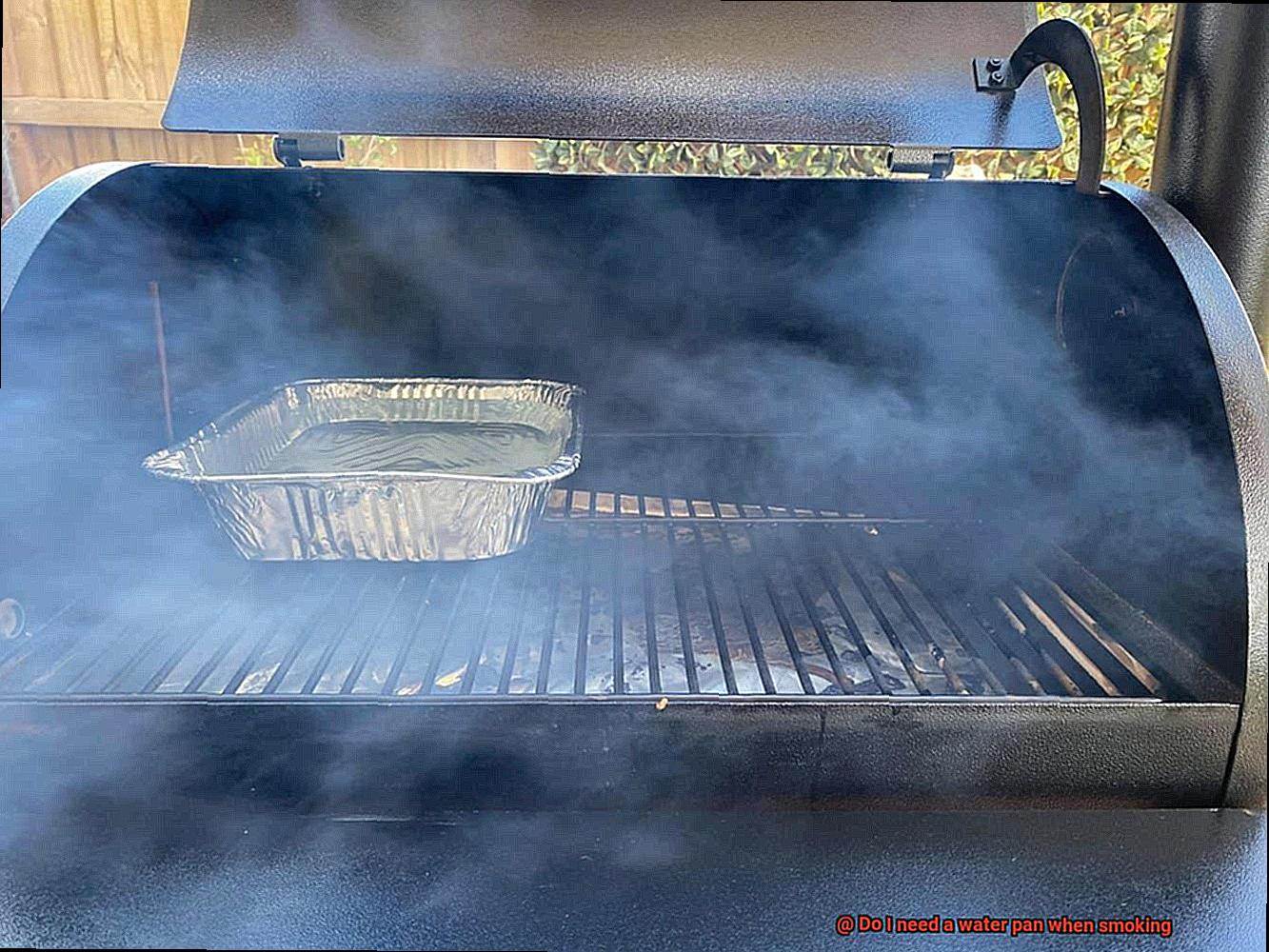
Smoking meat is a delicate process that requires attention to detail and an understanding of the specific needs of each type of meat. To achieve the perfect smoked flavor and texture, it’s essential to adjust cooking techniques according to the meat you’re cooking. In this article, we’ll explore the different needs of various types of meats when smoking and how a water pan can help regulate temperature and moisture.
Introducing the Water Pan
A water pan is a simple yet effective tool used in smoking meat. It’s a metal or aluminum tray filled with water that sits beneath the meat on the smoker’s grate. The water absorbs and releases heat as needed, helping to regulate the temperature inside the smoker.
Pork: Low and Slow
Pork is a popular meat for smoking, and it requires a low and slow cooking method. A water pan can help keep the temperature low, provide moisture, and prevent the meat from drying out. The water in the pan also helps to regulate the temperature by absorbing excess heat from the smoker, ensuring consistent cooking.
Beef: High Heat Cooking
Beef requires a higher cooking temperature of around 225-250°F for a longer period. While a water pan may not be necessary for beef, some pitmasters recommend using one to provide additional moisture and create a more stable cooking environment. This can be particularly helpful when smoking large cuts of beef, such as brisket.
Poultry: Moisture is Key
When smoking poultry, such as chicken or turkey, it’s crucial to cook it at a higher temperature than other meats to ensure that it reaches a safe internal temperature of 165°F. However, poultry also tends to dry out quickly, so using a water pan can help maintain moisture levels during cooking.
Fatty vs. Lean Meats: Moisture Management
Different types of meat have varying fat contents, which affects how they cook. Fattier meats like pork butt or ribs tend to produce more juiciness and require less added moisture during the cooking process. On the other hand, leaner meats like chicken breast or turkey may dry out if not cooked with a water pan or other liquid source. A water pan can help maintain moisture levels and prevent leaner meats from drying out during smoking.
Conclusion: Experiment and Enjoy
Tips for Getting the Most Out of Your Water Pan
Smoking meat is a complex process that requires precision and patience. One component that can make or break your smoking experience is the water pan. A water pan is a tray filled with water that sits under the meat in your smoker. It helps regulate the temperature and moisture levels inside the smoker, resulting in tender, flavorful meat. Here are some tips for using a water pan to get the most out of your smoking experience:
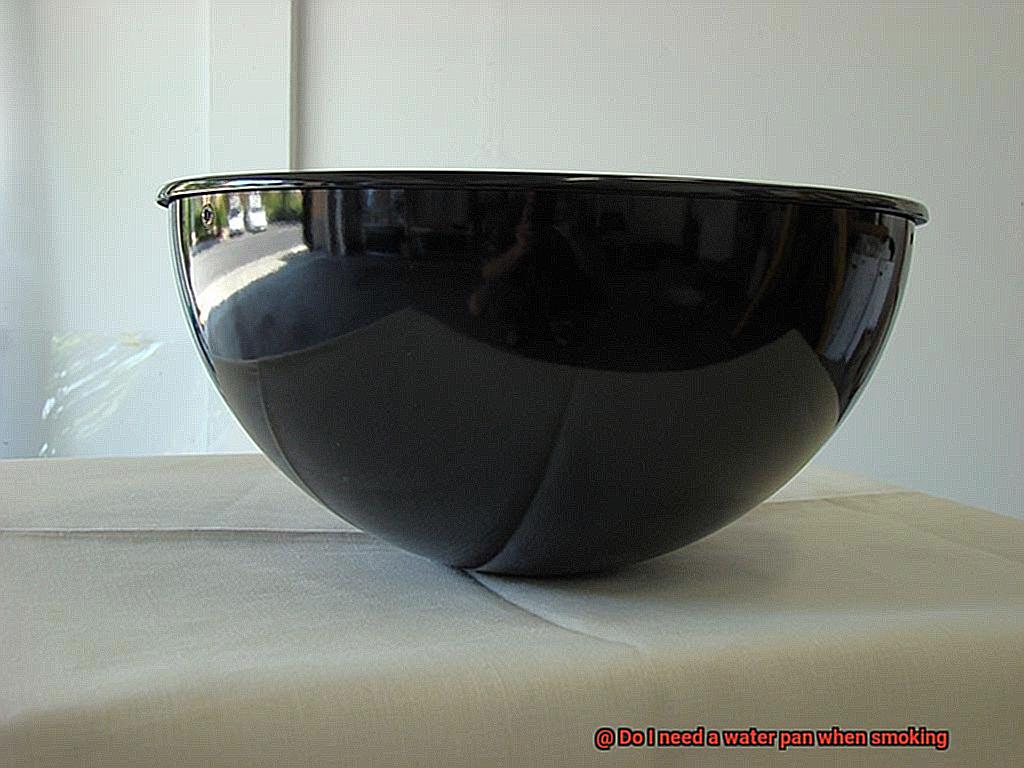
Tip #1: Use Hot Water for Faster Results
To help your smoker reach the desired temperature faster, fill your water pan with hot water before placing it in the smoker. This will prevent a drop in temperature when you add cold water.
Tip #2: Invest in a High-Quality Water Pan
Don’t skimp on your water pan. Invest in a high-quality, heavy-duty water pan that can withstand high temperatures without warping or melting. This will ensure that your water pan lasts for years and produces consistent results.
Tip #3: Experiment with Different Liquid Flavors
Plain water works fine, but why not add some extra flavor to your smoked meat? Try adding beer, apple cider, or fruit juice to your water pan for a unique taste. This will infuse additional flavor into your meat and take your smoking game up a notch.
Tip #4: Keep an Eye on the Water Level
As your meat smokes, the water level in your pan will decrease. Be sure to check it regularly and refill it as needed to maintain consistent moisture levels. A dry water pan can result in dry, overcooked meat.
Tip #5: Place the Water Pan Directly Above the Heat Source
For optimal results, place your water pan directly above the heat source in your smoker. This will allow the water to evaporate and create steam, which will keep your meat moist and tender. Plus, it’ll add an extra layer of flavor to your meat.
Tip #6: Clean Your Water Pan Regularly
Over time, your water pan will accumulate residue from smoking sessions. To prevent any unwanted flavors from transferring to your meat, make sure to clean your water pan regularly. This will also ensure that your water pan lasts for years to come.
Alternatives to Using a Water Pan
While a water pan can be helpful in maintaining moisture, there are other alternatives that can produce equally delicious and juicy results – and maybe even enhance the flavor. Let’s take a closer look at some of these alternatives.
- Spray Bottle: If you’re looking for an easy and effective way to keep your meat moist, grab a spray bottle filled with your liquid of choice. Whether it’s water, apple juice, vinegar, or something else, simply spritz the meat every hour or so during the smoking process. This method can infuse some extra flavor into your meat and provides more flexibility in terms of the moisture level.
- Basting Brush: For more control over the amount of liquid applied and to create a more flavorful crust on the meat, use a basting brush. Apply your liquid of choice directly onto the meat and watch it sizzle as it penetrates into the meat. This method creates a flavorful crust on the meat, while keeping it moist inside.
- Container of Liquid: Another alternative is to place a container of liquid such as beer, apple juice, or wine directly on the grates next to the meat. As the liquid heats up, it will create steam which will help keep the meat moist. This method doesn’t require frequent attention like spraying or brushing would.
- DIY Water Pan: If your smoker doesn’t come equipped with a built-in water pan, don’t worry. You can create your own by placing a disposable aluminum pan filled with water on the bottom rack of the smoker. This method is especially useful for larger cuts of meat that require longer cooking times. You can also use this opportunity to experiment with adding flavors to the water such as herbs or spices.
Benefits of Not Using a Water Pan
Consider ditching the water pan. While some swear by it, there are numerous benefits to not using a water pan when smoking meat.
Firstly, without the water pan, you can achieve that crave-worthy crispy bark on your meat. Water pans add moisture to the air, creating steam that penetrates the meat and makes it less crispy. Without the water pan, your meat will have that satisfying crunch on the outside.
Secondly, not using a water pan leads to a stronger smoky flavor. The steam generated by the water pan dilutes the smoke flavor, reducing its intensity. Without a water pan, the smoke can saturate the meat more fully, resulting in a more pronounced smoky flavor.
Moreover, omitting a water pan can make clean-up a breeze. Water pans collect grease and debris from the meat, making them challenging to clean. Without it, you eliminate this extra step in the cleaning process.
Lastly, not using a water pan saves time during smoking. You won’t need to worry about filling and maintaining a water pan, allowing you to focus solely on smoking your meat and monitoring its progress.
umXRJdg18CI” >
Conclusion
To sum up, the age-old debate on whether or not to use a water pan when smoking meat is still going strong. Some swear by it, while others argue it’s unnecessary or even counterproductive. Ultimately, the decision to use a water pan depends on your personal preference and the type of smoker you’re using.
A water pan can be an indispensable component of many types of smokers as it regulates temperature, adds moisture to the cooking environment, infuses additional flavor, and reduces smoke production. However, using a water pan can also dilute the flavor of smoke, make temperature control more challenging, and create difficulties in cleaning up.
Different meats require varying levels of moisture when smoking. Using a water pan can help regulate temperature and moisture levels for optimal results. If you’re looking for alternatives to using a water pan, consider spraying your meat with liquid or using a basting brush or container of liquid directly on the grates next to the meat. You could even create your own DIY water pan.
Ultimately, whether you choose to use a water pan or not comes down to personal preference. Experimenting with different techniques and methods can help you find what works best for you and your smoking style.

